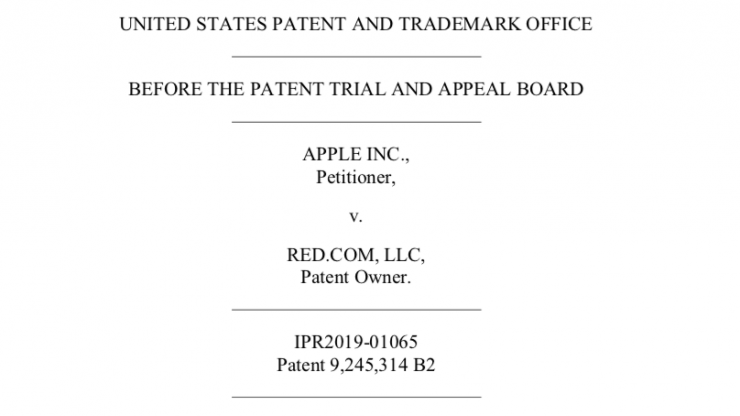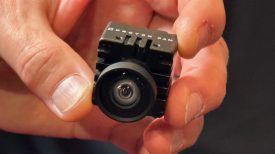
RED has withstood Apple’s challenge on their REDCODE patents. The UNITED STATES PATENT AND TRADEMARK OFFICE issued a ruling on the 8th November.
For those not in the know, Apple was challenging RED’s patents for internal compressed RAW recording. I can only speculate, but this was probably to do with Apple wanting to further push ProRes RAW. If Apple’s challenge had have been successful it would have opened the door for manufacturers to include ProRes RAW internal recording in their cameras.
The ruling ordered that the petition from Apple is denied and that no inter partes review is instituted for any challenged claim on any ground of unpatentability.
The ruling also said that Apple’s obviousness challenge is unclear and incomplete.
I’m no legal expert, but it sounds like the ruling that was made was almost a case of, you need to come back with more evidence if you want to challenge this again. Whether or not Apple attempts to challenge this ruling or try again remains to be seen.

Over on REDUSER this is what Jarred Land posted:
“We are pleased to see our REDCODE patents withstand another challenge.To be clear, as I mentioned before, this never really was Apple vs. RED.
It has always been APPLE + RED, and this was all part of the process defining how we work together in the future. RED integration with Apple’s METAL framework for realtime R3D playback is coming along well and the work that the two teams are doing together is exceeding expectations.
We are very excited for the new Mac Pro and the new XDR pro display and the power they bring to the entire RED workflow.”
Jarred Land RED
If you want to read the complete ruling you can download the document above.
Here is the conclusion from the UNITED STATES PATENT AND TRADEMARK OFFICE BEFORE THE PATENT TRIAL AND APPEAL BOARD- APPLE INC., Petitioner, v. RED.COM, LLC, Patent Owner for IPR2019-01065 Patent 9,245,314 B2:
c) Conclusion
In general, Petitioner mixes features from the references in a way that leads to multiple contradictory interpretations of the obviousness rationale. And even under the plausible interpretations described above, Petitioner’s challenge either fails to account for all limitations or lacks adequate reasoning. Apart from these problems, Petitioner has not explained how Presler teaches the recited “substantially visually lossless image” even under its own proposed construction. Thus, Petitioner has not shown a reasonable likelihood that it would prevail in establishing that the subject matter of claim 1 would have been obvious over Presler and Mølgaard.
4. Claim 16
Like claim 1, claim 16 recites “compressed processed image data can be decompressed and demosaiced into a substantially visually lossless image.” Ex. 1001, 18:4–6. Also, Petitioner’s analysis for claim 16 refers t
the analysis of claim 1. See Pet. 57–61. So all the deficiencies in Petitioner’s obviousness rationale that we discussed above for claim 1 (see supra
§ II.C.3) apply to the obviousness rationale for claim 16. Thus, Petitioner has not shown a reasonable likelihood that it would prevail in establishing that the subject matter of claim 16 would have been obvious over Presler and Mølgaard.
5. The Dependent Claims
Claims 2–15 and 17–30 depend from claims 1 or 16, and the corresponding challenge incorporates the same deficiency as discussed above. So for the same reasons discussed in connection with claims 1 and 16, Petitioner has not demonstrated a reasonable likelihood that it would prevail in establishing the unpatentability of challenged claims 2–15 and 17– 30.
III. CONCLUSION
Petitioner has not shown a reasonable likelihood that it would prevail
in establishing that any of the challenged claims 1–30 are unpatentable.
IV. ORDER
It is ORDERED that the Petition is denied and that no inter partes
review is instituted for any challenged claim on any ground of unpatentability.





